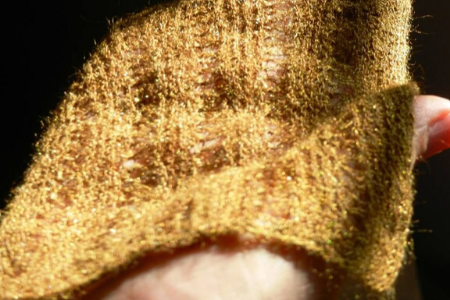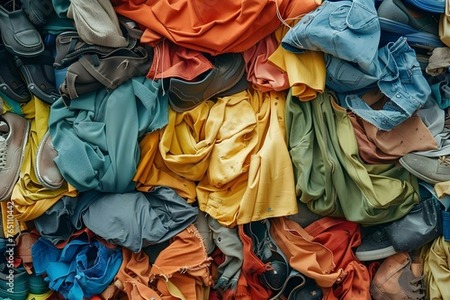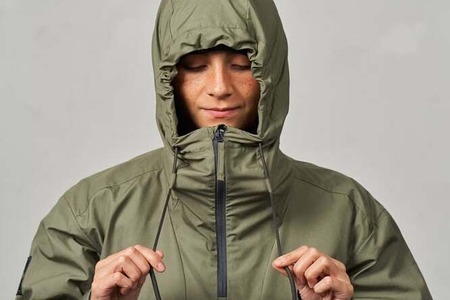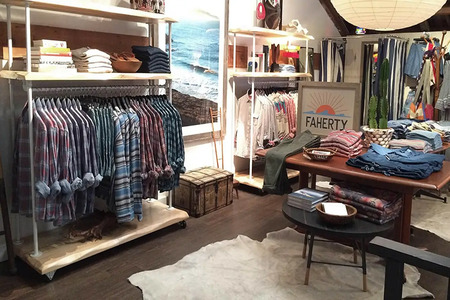
Sea silk: the world's exclusive textile, all set to go for auction this week
YarnsandFibers News Bureau 2019-11-13 10:12:24 – NoneOn Wednesday, a curious item will be auctioned at Landmark on the Park on the Upper West Side.
At first glance, there is little remarkable about lot 200, a turban-style hat with a dark golden hue. On close inspection, its threads appear similar to that of human or horse hair, but it is in fact woven of a silken fiber unfamiliar to most New Yorkers.
Indeed, objects made of the material rarely come up for auction – there are only about 60 known items in existence and the last public sale may date as far back as 1767. As the auctioneer, Bob Ross, freely admits, the estimate for the hat ($5,000-$8,000) is little more than a wild guess. “I have no idea what this might sell for,” he says. “We’ll see how well-informed the market is.”
The market could be forgiven for being ill-informed. When we think of silk we often conjure images of insects, such as silkworms, or spiders. But this particular hat has an entirely different origin. Its threads were made by a Mediterranean mollusk, the noble pen shell Pinna nobilis.
Measuring up to a meter in height, these large bivalves root themselves to the seafloor by emitting hundreds of fibers, known as byssus (think of the grizzled threads you might find on a common mussel). Once extracted from the shell, cleaned and spun, it possesses a beautiful dark chestnut color, once compared to the “burnished gold of some flies and beetles”.
Historically, items made of cleaned byssus, properly known as sea silk, have been highly prized. According to the sixth-century historian Procopius, the Byzantine emperor Justinian I gave a gift of a sea silk cloak to five Armenian satraps. Since then, the fascination with this marine fiber has not abated, reaching its peak in modern times. The British admiral Horatio Nelson wrote of his intention to send his lover, Emma Hamilton, a pair of gloves made from byssus. Jules Verne chose to dress his narrator in Twenty Thousand Leagues Under the Sea, Dr Pierre Aronnax, in “sea-boots, an otterskin cap, a greatcoat of byssus lined with sealskin”.
This enthusiasm did not last in the 20th century, as the material struggled to find a place in our world of synthetics. Italian fascists briefly flirted with it, imagining that it might be used as camouflage, covering for aircraft and even gas masks. Such visions proved illusory and by the end of the second world war, weaving was confined to a handful of women in Italy.
Inspect lot 200 and it is not hard to see why we do not wear sea silk today. The hat weighs a mere 83 grams, but, according to Felicitas Maeder, a scholar at Basel’s Natural History Museum, it may be made of the byssus of 80 mollusks. Each of these giant shells would have had to be hauled up from the seabed before their byssus could be cut off, cleaned, woven and spun. The operation required a huge amount of time and labor. It was also highly destructive to marine ecosystems (thankfully the Pinna nobilis is now protected under EU legislation; it is illegal to harvest byssus in the Mediterranean).
We might be tempted to cheer the decline of byssus, this fiber that required the destruction of so many giant mollusks to make a single hat. But today we are all too familiar with the cost of the synthetic materials that now surround us. Countless marine mammals and seabirds die each year after ingesting plastic; the spillage of oil, from which much of our clothing is ultimately derived, can also cause great harm to bivalves. Against these charges, the small-scale harvesting of sea silk begins to seem benign. It may be the case that the ecological cost of the lot on sale is lower than that of many of the plastic objects that surround us at home.
Not that sea silk will make a comeback. Recently scientists warned of unprecedented mass mortality outbreaks of the Pinna nobilis that threaten the survival of the species. From the coast of Spain to Cyprus, scuba divers have discovered ghostly fields of empty shells. Recent studies attributed the deaths to outbreaks of a parasite and mycobacteria. Concerned biologists are trying to protect the species by moving healthy individuals into tanks or harvesting their larvae which can then be grown in aquaria.
The fate of these bivalves is not exceptional. In recent years corals, sea urchins and mollusks have all been struck down by disease or mortality outbreaks which are often believed to be tied to rising water temperatures.
It’s a disappearance which can easily go unnoticed in the bustle of city life and one, no doubt, which will be ignored as bidding starts for Wednesday’s auction. Yet perhaps the sudden arrival of this fiber in the city should generate more than wonder, but serve as a quiet reminder of the incalculable loss taking place in our oceans and its relationship with human desire.
Courtesy: The Guardian
Market Intelligence
Ask for free sample Report

experience
Customer Base
dedicated team
Countries Served Worldwide









